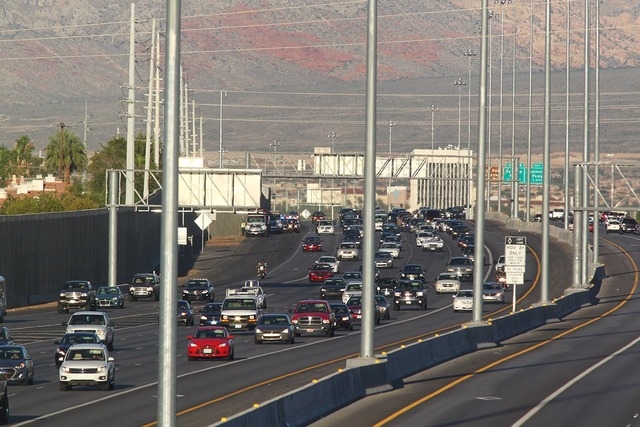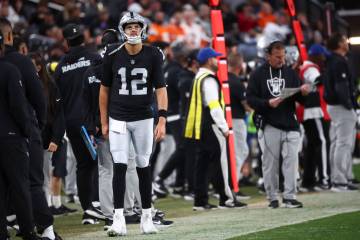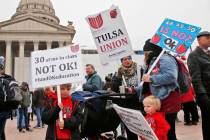5 worst problems faced by Las Vegas
Most historic Best of Las Vegas categories help us identify the best of the best: The restaurants, shows or companies that deserve your business, according to fellow Las Vegans.
Between 1997 and 2011, though, Best of Las Vegas asked something else: What is the biggest problem facing Las Vegas? Here are the worst problems faced by the valley over a decade and a half, based on your votes:
Traffic (1999, 2000, 2001, 2003, 2006, 2007)
Las Vegas traffic — if we’re talking strictly the amount of extra time it takes to get from point A to point B on a given day — never makes the top 10 lists.
Those spots are mostly reserved for coastal cities like LA and San Francisco. Las Vegas ranked 19th in the country, at last report.
There may be fewer cars on the road, but we struggle with what the cars are actually doing (or, more accurately, the drivers inside them).
Nevada ranked No. 12 on a list of the nation’s worst drivers in December, based on variables like fatalities, drunken driving and citations issued. The top 10 were mostly in the South and Midwest.
Another area where Las Vegas struggles? Pedestrian deaths. The metro area ranked ninth in the nation last year for percentage of traffic fatalities that were pedestrians (20.2%).
Water shortage/issues (2004, 2005, 2008, 2009)
Much of the Southwest was in a drought from 2000 to 2004, at which point concerns over the water shortage dominated the rankings for a few years.
Although Lake Mead hit a record low this summer, bringing to the forefront of everyone’s minds the potential water crisis faced by the entire Southwest, water officials say Las Vegas doesn’t have much to worry about for now.
The reservoir supplies 90 percent of the valley’s water, so our close proximity is helpful. Additionally, the Southern Nevada Water Authority is in the process of building a $817 million intake that will protect the valley’s water supply if water levels continue to fall — up to another 80 feet.
A $300 million pump station that could help the intake draw water from areas too low for water to be released through the Hoover Dam would also help, according to officials.
Unemployment (2010, 2011)
More than two years into the recession, in July of 2010, unemployment in Las Vegas peaked at 14.5 percent, according to the Bureau of Labor Statistics.
The 2010 annual unemployment rate was 14.1 percent, and 2011 wasn’t much better at 13.6 percent.
The metro clawed its way back, though, and in August unemployment dropped to a six-year low: 7.7%. It’s not the 4 or 5 percent of the boom years — and still below the national average of 6.1 percent — but it’s a start for one of the cities hit hardest by the recession.
Yucca Mountain (2002)
In July 2002, the Senate voted to override Gov. Kenny Guinn’s veto of the Yucca Mountain project, ensuring the question of whether nuclear waste should be transported through Nevada and disposed of at Yucca Mountain would live on well into the next decade.
Most recently, a report issued by the Nuclear Regulatory Commission found the Yucca Mountain site could be safe to store nuclear waste.
The report, issued Thursday, concluded that the site could satisfy licensing rules “with reasonable expectation.” Officials from the state of Nevada challenged the report, saying it didn’t properly consider all variables that could impact safety.
The future of the site remains up in the air as the Department of Energy continues to consider whether to fund the pursuit of a repository license.
Growth/overpopulation (1997)
The official population of Clark County in 1997 was 1,173,090. That number represented a near-doubling in population over the course of a decade: In 1987, only 616,650 people called the county home.
The county grew by between 6 and 9 percent in seven of those years, compared to 2- to 5-percent growth in the decade before that.
Growth slowed down to 2-5 percent in 1998-2007, but came to a screeching halt at the start of the recession: In 2008, Clark County recorded a population drop (-0.5%) for the first time in history.
The economy has started to recover, and the population is climbing again, although at a slower rate than before the recession — 2.7 percent in 2013.
More of the Best of Las Vegas















